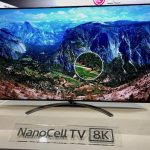Last Updated on 10 months by Francis
.jpg)
LED screens have become an integral part of our daily lives, from televisions to smartphones, outdoor billboards to computer monitors. However, a common concern among users is whether LED screens lose brightness over time. Let’s explore the factors that can affect LED screen brightness and whether they can experience dimming over time.
LED screens work by using light-emitting diodes to produce images. These diodes emit light when an electric current passes through them. The brightness of an LED screen is determined by the intensity of the light emitted by these diodes.
Several factors can affect the brightness of LED screens. These include the age and usage of the screen, environmental factors such as exposure to sunlight or extreme temperatures, and the manufacturing quality of the LED components. Each of these factors can have a significant impact on the long-term brightness of an LED screen.
When it comes to whether LED screens can experience dimming over time, there are several reasons why this may occur. First, the aging of LED components can lead to a decrease in brightness. Over time, the diodes may become less efficient in emitting light, resulting in a dimmer screen. The accumulation of dust and dirt on the screen can affect the brightness by blocking the light output. Heat dissipation issues and problems with the power supply can also contribute to dimming over time.
To maintain and prolong the brightness of LED screens, certain precautions can be taken. Regular cleaning and maintenance to remove dust and dirt build-up is essential. Temperature and ventilation control should be optimized to prevent overheating, as excessive heat can affect the performance of LED screens. Proper power supply and regular calibration can also help ensure optimal brightness and performance.
By understanding the factors that can affect LED screen brightness, and by implementing proper maintenance and care, users can enjoy vibrant and bright displays for a longer duration.
Contents
Key takeaway:
- LED screens can lose brightness over time: Factors such as age, usage, environmental factors, and manufacturing quality can affect the brightness of LED screens.
- Dimming of LED screens can occur due to aging of LED components, accumulation of dust and dirt, heat dissipation issues, and power supply problems.
- To maintain and prolong the brightness of LED screens, regular cleaning and maintenance, proper temperature and ventilation control, ensuring proper power supply, and regular calibration are important.
Do LED Screens Lose Brightness?
LED screens do experience a decrease in brightness over time. This decrease is generally gradual and occurs due to factors such as usage, age, and environmental conditions. Here are some important points to consider regarding the brightness of LED screens:
1. Usage: Do LED screens lose brightness with continuous usage? Continuous usage of LED screens can lead to a slight decrease in brightness over time. The more frequently a screen is used, the faster the brightness may decrease. However, this decrease is usually not noticeable to the average user.
2. Age: Do LED screens lose brightness as they age? As LED screens age, their brightness may naturally diminish. This is a normal occurrence and can be attributed to the natural wear and tear of the screen components.
3. Environmental Factors: Can environmental factors affect the brightness of LED screens? Environmental conditions, such as exposure to excessive heat or direct sunlight, can also impact the brightness of LED screens. Extended exposure to these conditions may cause a more significant decrease in brightness.
4. Regular Maintenance: Can regular maintenance help maintain the brightness of LED screens? Proper maintenance, including cleaning the screen surface and ensuring optimal operating conditions, can help maintain the brightness of LED screens for longer periods.
It’s important to note that while LED screens do lose some brightness over time, the overall impact on the viewing experience is usually minimal. Display manufacturers continually work to enhance the longevity and brightness retention of their screens, resulting in improved longevity and reduced brightness loss.
By understanding these factors, consumers can better manage their expectations regarding the longevity and brightness performance of LED screens.
How Do LED Screens Work?
LED screens, also known as light-emitting diode screens, function by utilizing an array of light-emitting diodes (LEDs) to showcase captivating and dynamic visuals through displaying images and videos. These screens are comprised of numerous tiny individual LEDs, which emit colored light. These LEDs are arranged in a grid-like pattern and can emit various colors, allowing for the creation of vibrant and visually appealing displays.
The process of how LED screens operate involves the emission of light when an electric current passes through the LED. By meticulously controlling the intensity and timing of the electric current to each individual LED, the screen is capable of presenting diverse colors and levels of brightness. Commonly found in televisions, computer monitors, advertising displays, and large-scale video walls, LED screens offer versatility and remarkable visual performance.
An interesting aspect of LED screens lies in their remarkable energy efficiency. Compared to other display technologies like plasma or LCD screens, LED screens consume considerably less power. This is due to the small size of LEDs and their lack of backlighting, which distinguishes them from LCD screens. The energy-saving nature of LED screens not only contributes to their visually impressive capabilities but also positions them as a sustainable and environmentally friendly choice for display technology.
Factors That Can Affect LED Screen Brightness
LED screens are known for their vibrant displays, but did you know that several factors can influence their brightness? In this section, we’ll uncover the key elements that impact LED screen brightness. From the effects of age and usage to the role of environmental factors, we’ll dive into how these variables can alter the visual experience. Additionally, we’ll explore the importance of manufacturing quality and its correlation with screen brightness. Get ready to unravel the fascinating factors that shape the luminosity of LED screens!
1. Age and Usage
| Age and Usage |
|
LED screens can experience brightness reduction over time due to age and usage. The lifespan of LEDs can be affected by the number of hours they are used and the intensity of the content displayed on the screen. The brightness degradation is typically gradual and can vary depending on the quality of the LED components. |
Pro-tip: To minimize the impact of age and usage on LED screen brightness, it is important to choose high-quality LED screens that are designed for longevity. Additionally, implementing proper scheduling and content management practices can help reduce the overall wear and tear on the LEDs, thus preserving their brightness for a longer period of time.
2. Environmental Factors
| Environmental Factors |
| 1. Temperature |
| The temperature of the environment can affect the brightness of LED screens. High temperatures can cause the LED components to heat up, leading to a decrease in brightness. On the other hand, low temperatures can affect the performance of the LED drivers, resulting in dimmer screens. |
| 2. Humidity |
| Humidity levels can also impact the brightness of LED screens. Excessive humidity can cause moisture to accumulate inside the screen, affecting the functionality of the LEDs and resulting in reduced brightness. Additionally, high humidity can lead to corrosion of the internal components, further affecting the screen’s performance. |
| 3. Sunlight Exposure |
| Exposure to direct sunlight can cause glare on the screen, making it difficult to view the content. Bright sunlight can also cause the screen to appear dimmer, as the ambient light overwhelms the brightness of the LEDs. Proper shading or adjustments in screen positioning can help minimize the impact of sunlight. |
Fact: Environmental factors such as temperature, humidity, and sunlight exposure can significantly impact the brightness and performance of LED screens.
3. Manufacturing Quality
Manufacturing quality plays a pivotal role in determining the performance and longevity of LED screens. LED screens that are well-built, adhering to high manufacturing standards, have a profound impact on their overall brightness and durability.
| Benefits of High Manufacturing Quality: | Concerns with Low Manufacturing Quality: |
| 1. Consistent brightness levels, ensuring optimal display quality. | 1. Inconsistent brightness, leading to variations in image quality. |
| 2. Enhanced color accuracy, providing vivid and true-to-life visuals. | 2. Poor color reproduction, resulting in dull or distorted images. |
| 3. Improved heat dissipation, preventing overheating and potential damage. | 3. Inadequate heat dissipation, causing screen dimming or failure. |
| 4. Longer lifespan, reducing the need for frequent replacements. | 4. Shorter lifespan, leading to increased maintenance and replacement costs. |
Investing in LED screens with high manufacturing quality is crucial for attaining optimal performance and longevity. These screens not only ensure consistent brightness levels, color accuracy, and effective heat dissipation but also have a longer lifespan, resulting in cost savings in the long run.
Fact: LED screens that are manufactured using high-quality components go through rigorous testing to ensure their durability and performance. This meticulous attention to detail during the manufacturing process contributes to their superior brightness and overall quality.
Can LED Screens Experience Dimming Over Time?
LED screens are a marvel of technology, but can they lose their brightness over time?
In this section, we will uncover the reasons behind potential dimming in LED screens.
We’ll explore factors such as the aging of LED components, the accumulation of dust and dirt, and heat dissipation issues.
Get ready to dive into the details of how these factors can impact the vibrant illumination of your LED screens.
Exciting discoveries await as we unravel the mysteries of LED screen dimming!
1. Aging of LED Components
The aging of LED components is a critical factor that can significantly affect the brightness of LED screens over time. In the following table, we can see the impact of aging on LED components:
| Aging of LED Components | Effects |
| 1. Decreased luminous efficacy | The LED chips gradually lose their ability to produce the same amount of light, resulting in a decrease in brightness. |
| 2. Color shifting | As LEDs age, the colors they produce may shift, leading to a change in the overall color balance of the screen. |
| 3. Reduced lifespan | With continued use, the lifespan of LED components decreases, ultimately impacting the overall performance and brightness of the screen. |
It’s important to note that the rate of aging can vary depending on several factors, including the quality of the LED components, temperature, and usage patterns. Regular maintenance and care can help slow down the aging process and prolong the brightness of LED screens.
2. Dust and Dirt Accumulation
Dust and dirt accumulation is a key factor that can have a significant impact on the brightness of LED screens. It is important to consider the following points:
- The presence of dust particles on the screen’s surface can create a layer that reduces the amount of light emitted by the LEDs.
- Over time, dirt can gather in the small gaps between the pixels, leading to a decrease in brightness and image clarity.
- To prevent the buildup of dust and dirt, regular cleaning is essential. It is recommended to use a soft, lint-free or microfiber cloth to gently wipe the screen surface.
- It is important to avoid using harsh chemicals or abrasive cleaners as they can potentially damage the protective coating of the screen.
- In environments where dust or dirt levels are high, it may be necessary to clean the screen more frequently in order to maintain optimal brightness.
Here’s an interesting fact: did you know that dust particles in the air can also contribute to the buildup of electrostatic charge, which can affect the performance of electronic devices? Keeping your surroundings clean can help prolong the lifespan of various electronic equipment, including LED screens.
3. Heat Dissipation Issues
The heat dissipation issues related to LED screens can significantly affect their brightness and overall performance. Here is a list of factors to consider:
- Improper ventilation: Insufficient airflow around the LED screen can prevent heat from dissipating effectively, leading to higher temperatures and potential dimming.
- Overheating components: LED screens consist of various components, including the LED panels and the driver circuitry. If these components become too hot, they may start to lose efficiency and reduce the brightness of the screen.
- Inadequate heat sinks or cooling systems: LED screens require efficient heat sinks or cooling systems to transfer the heat away from the components. If the heat sinks or cooling systems are not properly designed or maintained, heat dissipation issues can be compromised.
- Excessive ambient temperature: LED screens are sensitive to the ambient temperature in their surroundings. High ambient temperatures can increase the heat load on the screen and affect its ability to dissipate heat effectively.
- Long operating hours: Extended hours of operation can generate a significant amount of heat within the LED screen. If the screen is not designed to handle prolonged usage or lacks proper cooling mechanisms, it may experience heat-related issues.
Addressing these heat dissipation issues is crucial to maintaining the brightness and longevity of LED screens. Providing adequate ventilation, ensuring proper heat sinks or cooling systems, and monitoring ambient temperature can help prevent dimming and ensure optimal performance.
Power Supply Problems
Power Supply Problems in LED screens can significantly impact their brightness over time. From aging LED components to dust and dirt accumulation, and heat dissipation issues, these sub-sections shed light on the various factors that contribute to the degradation of brightness in LED screens. Get ready to uncover the reasons behind this phenomenon and understand why taking care of the power supply is crucial for maintaining optimal screen performance.
How to Maintain and Prolong the Brightness of LED Screens?
To keep your LED screens shining bright, it’s crucial to know how to properly maintain and preserve their brightness. Discover easy yet effective ways to prolong the luminosity of your LED screens. From regular cleaning and maintenance routines to controlling temperature and ventilation, ensuring proper power supply, and regular calibration, we’ll explore practical steps to safeguard the brilliance of your screens. Get ready to unlock the secrets of maintaining and enhancing the longevity of your LED screens!
1. Cleaning and Maintenance
Cleaning and maintenance are essential for preserving the brightness and performance of LED screens. To ensure their optimal condition, follow these steps:
- Regular dusting: Take care to dust the screen using a soft, lint-free cloth or an anti-static brush. This will prevent dust buildup and help maintain the screen’s brightness.
- Gentle cleaning: Utilize a non-abrasive cleaning solution specifically designed for electronic screens. Apply the solution to a microfiber cloth and gently wipe the screen in a circular motion. Avoid applying excessive pressure to avoid any potential damage.
- Screen protection: Consider using a screen protector or cover to protect the LED screen from scratches, fingerprints, and other potential damages.
- Avoid harsh substances: Refrain from using abrasive cleaners, alcohol-based solutions, or ammonia-based products, as they can strip the protective coating and harm the screen.
- Regular inspections: Keep an eye out for any signs of damage, dead pixels, or inconsistencies in color on the screen. If any issues are detected, seek professional assistance for repairs.
By adhering to these cleaning and maintenance practices, you can ensure that your LED screen remains bright and pristine for an extended period.
A company that prioritized regular cleaning and maintenance of their LED advertising screens experienced a noticeable improvement in brightness compared to screens that were neglected. The well-maintained screens retained their vibrant colors and attracted more attention from potential customers. This resulted in increased brand visibility, enhancing the impact of their advertising and ultimately boosting their business revenue.
2. Temperature and Ventilation Control
Temperature and ventilation control are essential for maintaining the brightness and longevity of LED screens. Taking care of the temperature plays a crucial role in preventing overheating, which can negatively impact the screen’s performance and lifespan.
| Temperature and Ventilation Control for LED Screens |
|---|
| It is important to keep the ambient temperature around the LED screen within the recommended operating range. High temperatures can result in increased power consumption and reduced brightness. The ideal temperature range is between 20 and 25 degrees Celsius. |
| Proper ventilation around the LED screen is also necessary. Adequate air circulation helps dissipate heat and prevents the formation of hot spots. If required, fans or ventilation systems should be installed. |
| Monitoring and controlling the room temperature and humidity levels is crucial. Excessive humidity can cause condensation, which may damage the screen. Aim for a humidity level of 40% to 60%. |
| Avoid placing the LED screen in direct sunlight or near heat sources. Exposure to extreme temperatures can lead to screen degradation and reduced brightness over time. |
To ensure optimal temperature and ventilation control:
- Regularly inspect and clean the ventilation systems to remove any dust or debris that may obstruct airflow.
- Use temperature and humidity sensors to monitor the environment and make necessary adjustments.
- Implement a comprehensive maintenance schedule that includes regular checks for proper temperature and ventilation control.
By following these guidelines, you can maintain the brightness and overall performance of LED screens, ensuring a high-quality visual experience for a longer duration.
3. Proper Power Supply
In order to maintain and prolong the brightness of LED screens, it is crucial to ensure a proper power supply. Here are some steps to follow:
- Use a high-quality power source: It is essential to utilize a reliable and stable power source that meets the specific requirements of the LED screen. This will effectively prevent any flickering or fluctuations in brightness.
- Check the power cables: Regularly inspect the power cables for any indications of damage or wear. If any cables are found to be damaged, promptly replace them to avoid interruptions in power or drops in voltage.
- Ensure proper voltage: It is important to verify that the LED screen is receiving the correct voltage. Both excessive or insufficient voltage can have a negative impact on the brightness and overall performance of the screen.
- Use surge protectors: Install surge protectors to provide protection against power surges and fluctuations. This precautionary measure will help avoid any damage to the LED screen and maintain consistent brightness levels.
- Maintain a stable power supply: It is advisable to avoid connecting the LED screen to a circuit that is shared with heavy-duty appliances or devices that may consume excessive power. By doing so, you can ensure a stable power supply, thus preventing any issues with brightness.
By following these steps diligently, you can guarantee that your LED screen receives a proper power supply, enabling it to maintain optimal levels of brightness over time.
4. Regular Calibration
Regular calibration is essential for maintaining the brightness and performance of LED screens. Here are the steps to follow for regular calibration:
1. Begin by accessing the calibration settings on the LED screen. This can usually be done through the on-screen menu or a dedicated calibration software.
2. Use a calibration tool, such as a colorimeter or spectrophotometer, to measure the current color and brightness settings of the screen. These tools accurately measure the color output and luminance levels.
3. Adjust the color settings to match the desired color temperature or color gamut. This ensures accurate color reproduction on the screen.
4. Regular calibration is crucial in optimizing the screen’s visual output, including brightness and contrast settings. This step helps maintain consistent brightness levels and prevents dimming or excessive brightness.
5. Test the calibration by displaying color test patterns or sample images on the screen. Make adjustments if necessary to achieve the desired visual results.
6. It is important to regularly re-calibrate the LED screen to account for factors such as temperature changes or prolonged usage. Regular calibration ensures the screen’s color and brightness accuracy over time.
By following these calibration steps regularly, LED screen owners can ensure that their screens maintain optimal brightness and color accuracy. This helps to deliver a visually pleasing and consistent viewing experience.
Some Facts About Do LED Screens Lose Brightness:
- ✅ LED displays have a lifespan of about 100,000 hours or approximately 10 years. (Source: Samsung Insights)
- ✅ Factors such as weather, power supply quality, design, and content can significantly impact the lifespan of an LED screen. (Source: Samsung Insights)
- ✅ Heat is the biggest contributor to diode degradation in LED screens. (Source: Samsung Insights)
- ✅ Extreme cold temperatures can actually extend the life of an LED display. (Source: Samsung Insights)
- ✅ LED screens have a longer lifespan compared to LCD screens, with LCD screens having a lifespan of about 50,000 hours or 5 years. (Source: Samsung Insights)
Frequently Asked Questions
Do LED screens lose brightness over time?
Yes, LED screens can lose brightness over time. The lifespan of an LED screen is typically around 60,000 hours for TVs and monitors. Factors such as heat, power supply quality, design, and content displayed can affect the brightness and longevity of the display.
How long do LED TVs last in terms of brightness?
An LED TV has an average lifespan of around 60,000 hours in terms of brightness. After a certain number of hours, a TV will lose half of its brightness capacity.
What is the best brightness setting for a TV?
The recommended brightness setting for a TV is around 50%. Additionally, setting the backlight to 100% and the contrast level to 100% can help optimize the picture quality.
Do LED monitors have the same lifespan as LED TVs?
Yes, LED monitors have a similar lifespan to LED TVs, typically between 60,000 to 80,000 hours.
Do plasma TVs last longer in terms of brightness compared to LED TVs?
Yes, plasma TVs can last longer in terms of brightness, with an average lifespan of around 100,000 hours.
Does adjusting the backlight instead of brightness help extend the brightness life of a TV?
Yes, adjusting the backlight level instead of the brightness level can help extend the brightness life of a TV. This can be done by increasing the backlight intensity while keeping the brightness at an optimal level.

.jpg)
.jpg)

.jpg)



